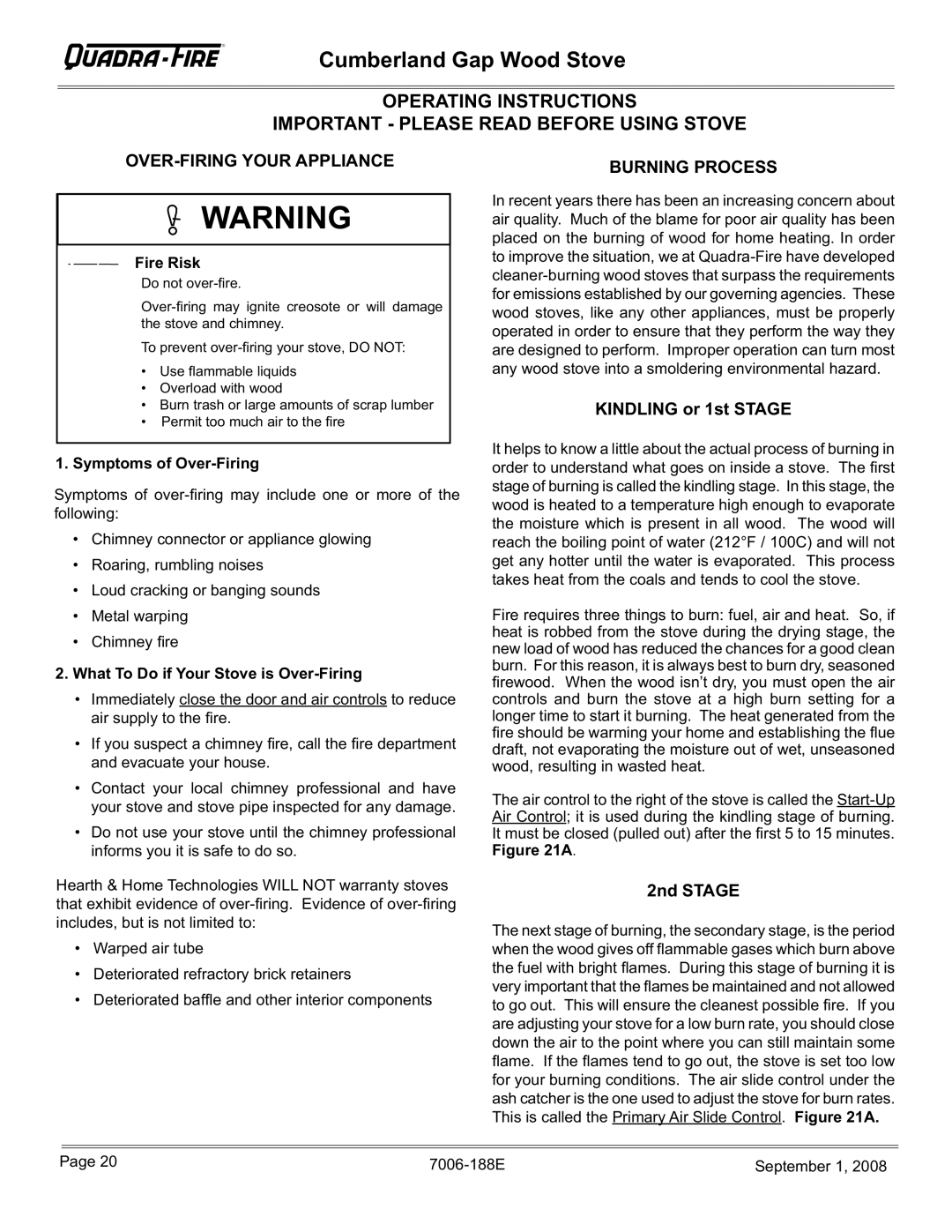
R
Cumberland Gap Wood Stove
OPERATING INSTRUCTIONS
IMPORTANT - PLEASE READ BEFORE USING STOVE
OVER-FIRING YOUR APPLIANCE
![]() WARNING
WARNING
Fire Risk
Do not
To prevent
•Use flammable liquids
•Overload with wood
•Burn trash or large amounts of scrap lumber
•Permit too much air to the fire
1.Symptoms of
Symptoms of
BURNING PROCESS
In recent years there has been an increasing concern about air quality. Much of the blame for poor air quality has been placed on the burning of wood for home heating. In order to improve the situation, we at
KINDLING or 1st STAGE
It helps to know a little about the actual process of burning in order to understand what goes on inside a stove. The first stage of burning is called the kindling stage. In this stage, the wood is heated to a temperature high enough to evaporate the moisture which is present in all wood. The wood will
•Chimney connector or appliance glowing
•Roaring, rumbling noises
•Loud cracking or banging sounds
•Metal warping
•Chimney fire
2.What To Do if Your Stove is Over-Firing
•Immediately close the door and air controls to reduce air supply to the fire.
•If you suspect a chimney fire, call the fire department and evacuate your house.
•Contact your local chimney professional and have your stove and stove pipe inspected for any damage.
•Do not use your stove until the chimney professional informs you it is safe to do so.
Hearth & Home Technologies WILL NOT warranty stoves that exhibit evidence of
reach the boiling point of water (212°F / 100C) and will not get any hotter until the water is evaporated. This process takes heat from the coals and tends to cool the stove.
Fire requires three things to burn: fuel, air and heat. So, if heat is robbed from the stove during the drying stage, the new load of wood has reduced the chances for a good clean burn. For this reason, it is always best to burn dry, seasoned firewood. When the wood isn’t dry, you must open the air controls and burn the stove at a high burn setting for a longer time to start it burning. The heat generated from the fire should be warming your home and establishing the flue draft, not evaporating the moisture out of wet, unseasoned wood, resulting in wasted heat.
The air control to the right of the stove is called the
2nd STAGE
The next stage of burning, the secondary stage, is the period
•Warped air tube
•Deteriorated refractory brick retainers
•Deteriorated baffle and other interior components
when the wood gives off flammable gases which burn above the fuel with bright flames. During this stage of burning it is very important that the flames be maintained and not allowed to go out. This will ensure the cleanest possible fire. If you are adjusting your stove for a low burn rate, you should close down the air to the point where you can still maintain some flame. If the flames tend to go out, the stove is set too low for your burning conditions. The air slide control under the ash catcher is the one used to adjust the stove for burn rates.
This is called the Primary Air Slide Control. Figure 21A.
Page 20 | September 1, 2008 |
